Description of broccoli Lord F1 with photos, reviews and growing recommendations
Broccoli contains many useful elements, including vitamins E, C, PP, B1 and B2, and large amounts of potassium and calcium. In terms of calcium, broccoli competes even with dairy products, so many gardeners who care about the health of their families grow it in their plots.
Hybrid Lord F1 is one of the most popular. It is characterized by immunity to diseases and resistance to negative environmental factors, and produces high yields. A description and photo of Lord F1 broccoli, as well as the basic rules for growing it, are further in the article.
Description of the broccoli hybrid Lord F1
Broccoli Lord F1 is a first generation hybrid. Suitable for cultivation in all regions of our country due to its high resistance to cold weather. It is distinguished by impressive productivity indicators and ease of care.
Main characteristics
Broccoli Lord cabbage is popular among gardeners due to its characteristics.
Description of the plant
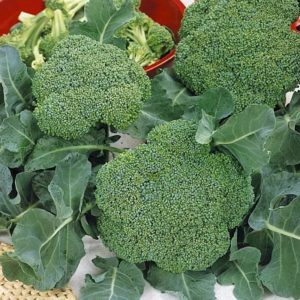
The height of the plant exceeds 0.5 m. The leaves are large, with a waxy coating. The heads are large, dense, heavy, fine-grained. The weight of each reaches 0.7-1.5 kg. After cutting off the central heads, it forms large quantities of lateral heads (more than 10 pieces). The weight of each side head is 200 g. The stem is powerful, does not bend or break under the weight of the heads.
Productivity
High. More than 5 kg of crop is harvested from 1 m². On average, 3 kg of vegetables are obtained from one plant.
Harvest dates
Early cabbage.The harvest is ready for harvest 50-65 days after sowing the seeds. Does not bloom within 2 weeks after the head appears.
Immunity
The manufacturer claims resistance to stem hollowness and downy mildew. According to reviews from gardeners, broccoli Lord F1 rarely suffers from other diseases.
Transportability
High. Dense inflorescences do not fall apart during long-term transportation. The hybrid remains fresh for more than two weeks after harvest.
Endurance
Resistant to cold weather. Suitable for cultivation in all regions of our country. Inflorescences form before the first frost.
Attention! The hybrid is prone to throwing out barren flowers. It is not recommended to plant it in early spring because of this feature.
Landing rules
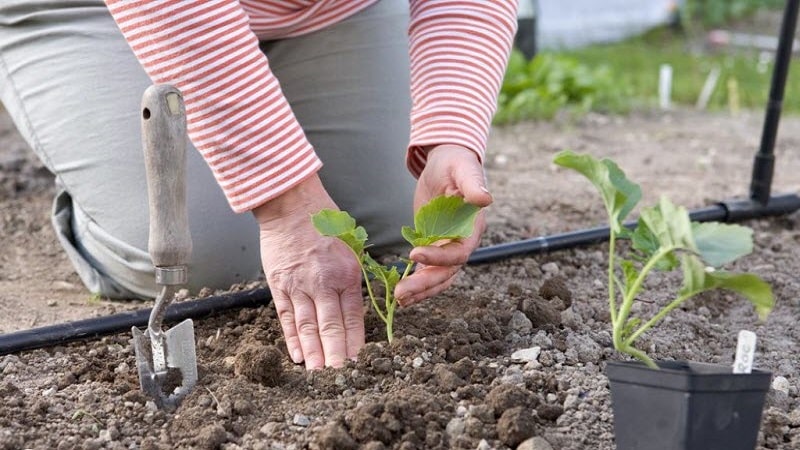
Due to the increased resistance to cold weather and the high germination of planting material, it is possible to use the seed and seedling method.
Often, the manufacturer processes hybrid seeds in the factory. Information about this is indicated on the packaging. In this case, independent preparation of planting material is not necessary.
Advice. Experienced gardeners soak even industrially processed seeds in warm water and harden them in the refrigerator before planting.
If the seeds were not prepared for planting by the manufacturer, do it yourself. The main stages of preparing broccoli seeds:
- Disinfection. Planting material is soaked for 30 minutes. in a light pink solution of potassium permanganate.
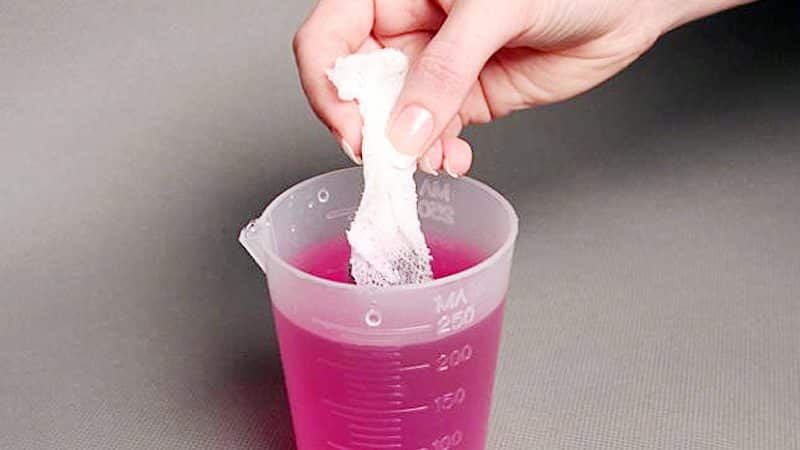
- "Awakening". The seeds are immersed for 15 minutes in water at a temperature of +50°C, and then for 5 minutes in a liquid at a temperature of +10°C.
- Growth stimulation. Planting material is soaked for 6-12 hours in a growth stimulator.They use purchased products (“Epin”) or homemade preparations (aloe juice diluted with water in a ratio of 2:1).
- Hardening. The seeds are spread on a damp cloth and placed on the refrigerator door for two days.
Soil preparation in the garden is done in the fall. The soil is dug up and cleared of weeds. For every 1 m², add 4-6 kg of rotted manure, 25 g of potassium salt and 35 g of superphosphate. Measure the acidity of the soil. If it is elevated (not neutral), add dry lime.
In the spring, the soil is dug up and leveled with a rake, and watered with a hot solution of copper sulfate.
Seedling method
Planting by seedlings allows you to get the harvest earlier. The germination rate of planting material will be higher.
For planting broccoli, choose light, nutritious soil. It is bought in specialized stores (universal mixture) or prepared independently from equal parts of garden soil, humus, sand and peat.
Sow the seeds in a wide and shallow container. Then they dive into individual pots.
The soil, drainage and planting containers are disinfected. Use boiling water or a dark pink solution of potassium permanganate.
A 5 cm layer of drainage is poured into the container for sowing seeds. The rest of the volume is filled with soil. Water it with warm, settled water.
Planting seeds for seedlings is possible from early March to mid-April. Grooves 1.5 cm deep are made in the soil at a distance of 4 cm from each other. The seeds are placed in them so that there is 2 cm of free space between them. The grooves are covered with soil and watered with warm water from a spray bottle.
The boxes are left at room temperature, moistening the soil as it dries.
After the shoots appear, the boxes are removed to a place with a temperature of +10°C. They are then brought back into the room.In order for the seedlings to have maximum stability, they are grown at a temperature of +16°C during the day and +9°C at night.
Water the seedlings at the root, without getting on the leaves, in the evening or early in the morning, when the sun is inactive. There is no need to shade broccoli.
Plant in individual pots 2 weeks after the first shoots appear. They are carefully taken out of the common box with a fork and transferred to new containers filled with soil and drainage. The soil is moistened with warm water, the plants are left at room temperature.
A week after picking, the plants are fed. The product is prepared from 5 liters of water, 15 g of superphosphate and 10 g of potassium salt.
The seedlings are ready for planting 1-1.5 months after sowing the seeds. By this time, 5-6 leaves will form on the plant, and the soil outside will warm up.
Transplant broccoli into open ground, using a 30x40 pattern on a cloudy day. Before this, 1 tbsp is placed in each well. l. complex mineral fertilizers.
note! 14 days before transplanting, broccoli seedlings begin to harden.
Seedless method
Seeds are sown in open ground starting in mid-April. With this method of growing, plants initially develop resistance to negative environmental factors.
The soil and seeds are prepared in the same way as for seedlings way.
Recommended germinate seeds before planting in open ground. This will allow you to immediately remove planting material that has not sprouted.
Seeds are sown at a distance of 5 cm from each other. The distance between the rows is 60 cm. Some gardeners prefer to sow seeds at a distance of 30-35 cm.
The beds are watered with warm water with the addition of a small amount of growth stimulator and covered with film.After the first shoots appear, the greenhouse is opened slightly for several hours every day, gradually increasing the ventilation time. As a result, the film is removed during the day and used only at night. It is completely removed when the threat of night frosts has passed.
Water the plants as the soil dries with warm water, carefully so as not to wash the soil. The leaves of the plants are sprayed.
The first time fertilizing is applied after the appearance of two true leaves. To prepare the composition, add 30 g of superphosphate and 20 g of potassium salts to 10 liters of water.
The second feeding is applied when four pairs of leaves appear. Complex mineral fertilizers are used.
Note! Since Lord cabbage is a hybrid, self-collected seeds are not suitable for sowing. Unlike varieties, hybrids do not retain the characteristics of the mother plant.
Features of care
Although Broccoli Lorde is hardy, it is important to provide it with proper care.
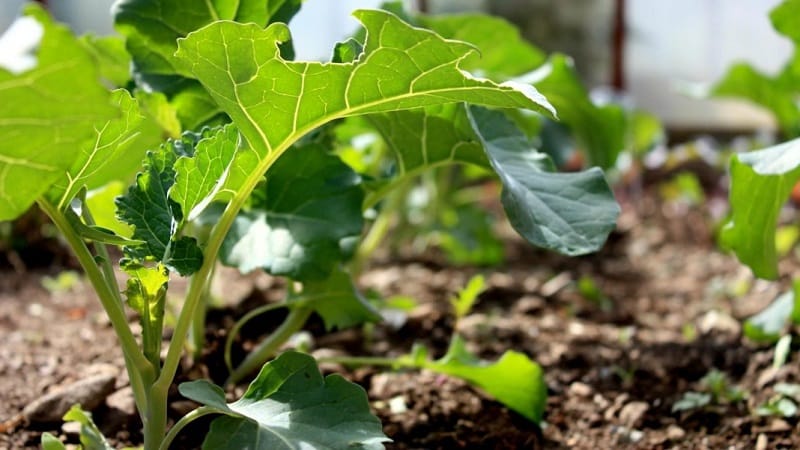
Watering
Water broccoli with warm water in the morning or evening, when the sun is not active, so that there are no burns on the leaves. A distinctive feature of Lord is drought resistance, but in moist soil the yield will be higher. The beds are watered 2 times a week in cloudy weather or every other day if the summer is hot.
Spraying
Cabbage is sprayed daily in the evening with warm water.
Loosening
After each watering and rain, the soil is loosened to destroy the earthen crust, which interferes with root air exchange.
Lighting
Broccoli Lord is a light-loving plant that does not need shading. It is planted in the most illuminated area of the garden.
Hilling
20 days after planting the seedlings in open ground, broccoli is hilled, raising the soil by 5-10 cm. After 2 weeks, the procedure is repeated.This is necessary for the formation of a large number of lateral roots.
Mulching
Cabbage beds are covered with rotted straw and hay, sawdust, peat, humus, etc. Mulch protects the plants from weeds, diseases, pests, cold weather, etc.
Feeding
When growing broccoli Lord, the following feeding scheme is used:
- A week after planting seedlings in open ground. Use organic fertilizers. For example, add 1 kg of rotted cow and horse manure or 0.5 kg of chicken manure to a 10 liter bucket of water.
- 2 weeks after the first. To prepare the solution, mix 10 liters of water, 1 kg of rotted manure and 1 tsp. urea.
- When does broccoli bloom? Use mineral compositions including potassium sulfate.
- After cutting the head of cabbage. This stimulates the formation of side shoots. Use fertilizer with potassium or a product prepared from 10 liters of water and 1 tbsp. l. ash.
- At the end of summer. Use nitrogenous fertilizers or a mixture of nitrate with a manure solution.
Before applying fertilizing, the soil is moistened. Otherwise, the broccoli roots will be burned.
Harvest
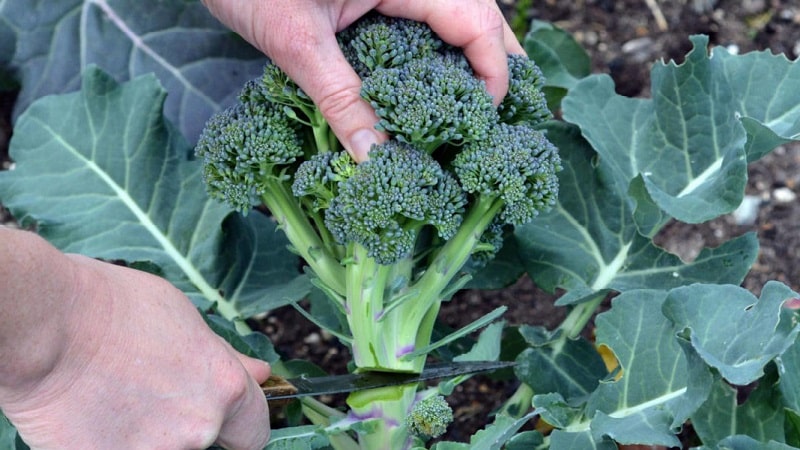
The central heads of Broccoli Lorde are cut off when they are fully formed. If this is not done, the plant will release inflorescences in 2 weeks. The procedure will provoke the formation of lateral processes, which are also cut off as soon as they form.
Reviews
Many gardeners who have tried to grow Broccoli Lorde are pleased with the results.
Andrey, Tver: “I decided to buy broccoli Lord for the first time last year. Grown by seedlings in open ground. I applied only homemade fertilizers from rotted manure and ash. I was pleased with the yield and the taste too. However, broccoli becomes much tastier after freezing.”
Inna, Lipetsk: “I’ve been growing Broccoli Lord for several years now. I sow the seeds directly into the ground. To get a harvest throughout the summer, I plant the first seeds at the end of April, and then several more times, with an interval of 2 weeks. I cut 2-3 kg from each plant per season. The taste is interesting. The only negative is that it blooms quickly, so it must be collected in a timely manner.”
Alexandra, Moscow: “I have planted Broccoli Lord F1 several times already. The main advantages are immunity, cold resistance, drought resistance. I didn’t get sick, although I didn’t carry out preventive treatments.”
Read also:
How to properly freeze broccoli for the winter
Conclusion
Lord F1 is one of the most popular broccoli hybrids. It is suitable for cultivation in any region of Russia. It is resistant to cold weather and drought, is not afraid of direct sunlight, and has high immunity. The disadvantage is the tendency to quickly throw out the inflorescences. Growing Lord cabbage does not require a lot of time and money. The main thing is to water, feed and harvest in a timely manner.